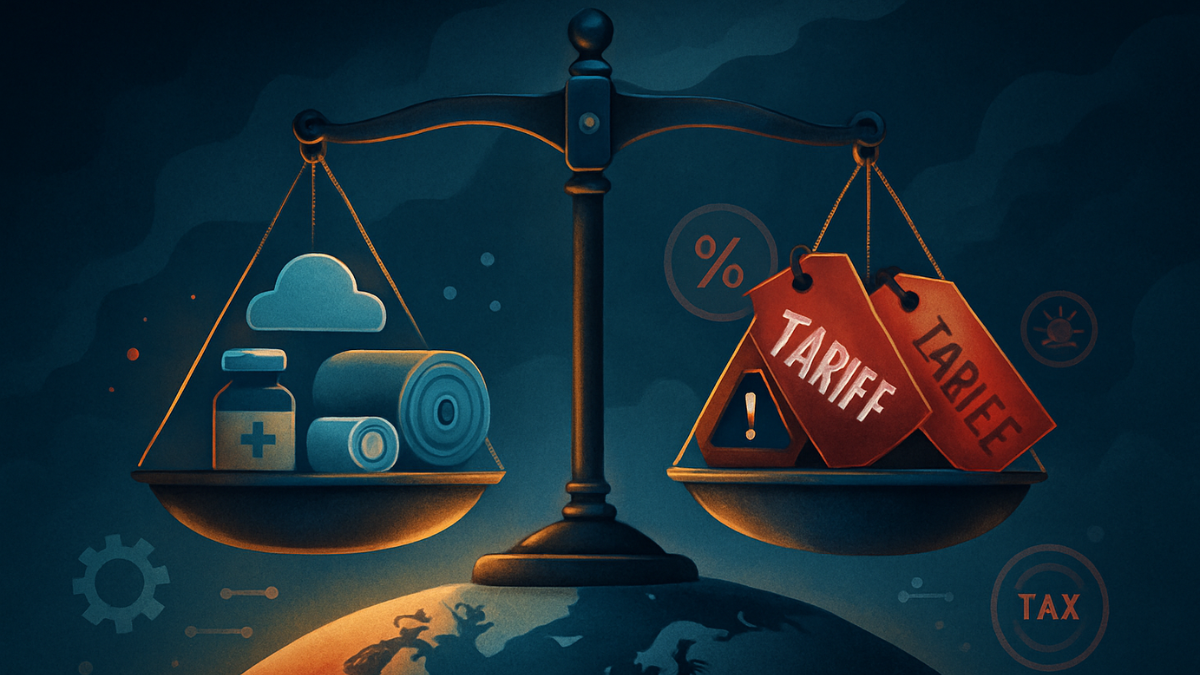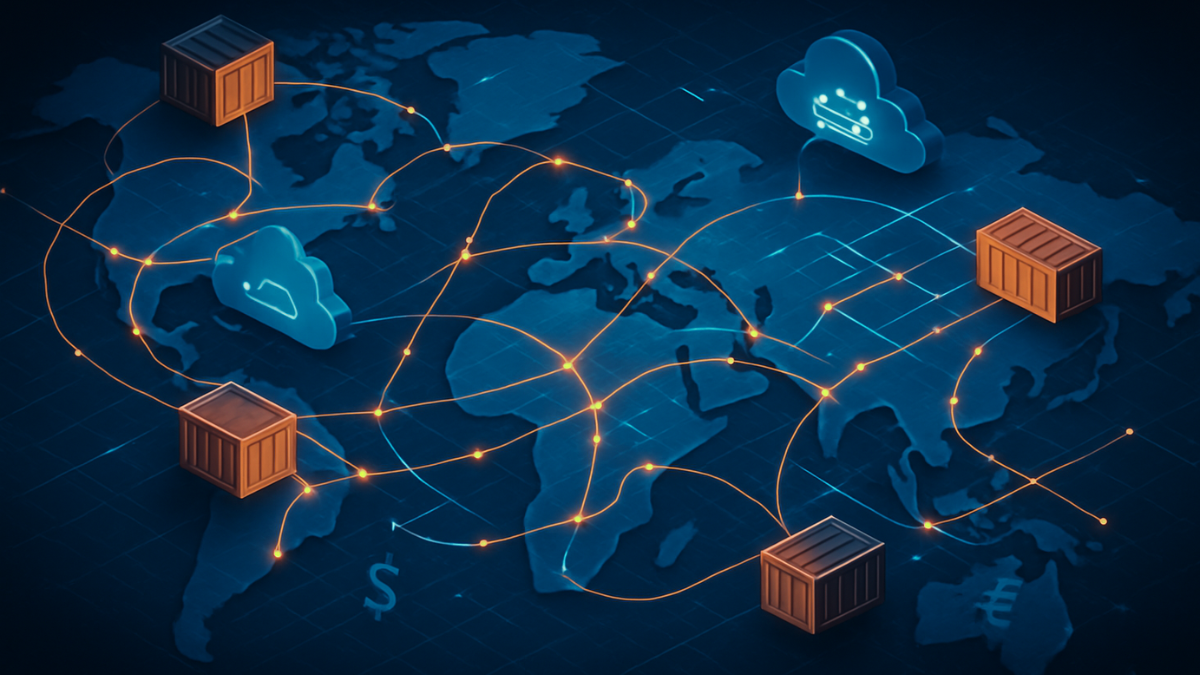Over the past year, U.S.–India trade relations have entered a more complex phase after 50% US Tariffs on India. Although the rhetoric has remained largely cordial, the return of Donald Trump to the presidency in 2024 brought with it a reassertion of “America First” trade policies. As a result, India found itself once again under scrutiny over market access, pharmaceutical exports, digital taxes, and perceived trade imbalances. The reintroduction of U.S. tariffs on India added further strain to an already sensitive trade dynamic.
This dossier offers a comprehensive analysis of the U.S. tariffs on India between August 2024 and August 2025, with special focus on textiles, pharmaceuticals, IT services, and agricultural exports. It also explores how the Indian government, industry associations, and exporters responded — balancing retaliation, diplomacy, and WTO recourse. Finally, we evaluate the longer-term implications of these trade frictions for one of the world’s most important bilateral economic relationships.
A Renewed Trade Strain: Timeline of Tariff Actions
The revival of tariffs between the United States and India in the past year follows a well-worn pattern — starting with investigations, followed by targeted levies, and then mounting political pressure to negotiate bilateral deals.

-
September 2024: The Trump administration announces a review of India’s pharmaceutical export compliance, particularly in the generics segment. Allegations surface around IP violations and FDA non-compliance, leading to new scrutiny under USTR Section 301 mechanisms.
-
October 2024: A 15% tariff is imposed on select Indian pharmaceutical APIs and finished generics, including paracetamol, metformin, and certain antibiotics. The U.S. cites unfair pricing and non-reciprocal regulatory barriers.
-
November 2024: The USTR adds Indian IT services to its “market access concern” list, accusing New Delhi of discriminatory data localization policies. Although no tariffs are applied, warnings are issued regarding digital service taxation.
-
January 2025: The U.S. imposes an additional 10% duty on cotton and synthetic textile products from India, citing dumping concerns and subsidy distortions.
-
March 2025: In retaliation for the continuation of India’s Equalization Levy (2% tax on foreign e-commerce), the U.S. threatens tariffs on digital service exports, including IT consulting. India refuses to withdraw the tax.
-
May 2025: A bilateral meeting in Washington between Commerce Minister Piyush Goyal and USTR Katherine Tai results in a partial rollback of pharmaceutical tariffs — but textile duties remain in place.
Pharma Under Pressure: U.S. Tariffs on India
India is the world’s largest supplier of generic medicines by volume, and exports over $7 billion annually to the U.S. But in 2024, several warning letters from the U.S. Food and Drug Administration (FDA) flagged quality lapses at Indian plants — particularly in states like Gujarat and Telangana. The Trump administration used these findings to justify tariffs, claiming Indian firms were flooding the U.S. market with underpriced drugs.
The 15% tariff, applied in October 2024, targeted common generics like acetaminophen, amlodipine, and cefixime. The move sent shockwaves through India’s pharmaceutical sector. Exporters feared a sharp drop in price competitiveness, while U.S. importers worried about shortages and price hikes.
India’s Ministry of Commerce issued a formal demarche to the U.S. embassy in New Delhi, stating that “India’s pharmaceutical exports are essential for affordable healthcare in the United States” and emphasizing their long history of FDA-approved manufacturing.
Industry voices echoed this. The Indian Pharmaceutical Alliance (IPA) described the tariffs as “counterproductive” and warned that up to 20% of U.S. generics could face disruption due to the duties.
By May 2025, following bilateral consultations, the U.S. agreed to suspend tariffs on certain life-saving drugs, especially those in short supply. However, scrutiny on compliance remains high, and the FDA is expected to maintain stricter inspections of Indian plants in 2025–26.
🛢️ 50% tariffs, secondary sanctions warning: Trump’s crackdown pushes India to the edge
Textiles and Cotton: Dumping Allegations Revive Tariff Risk
In January 2025, Indian textile exporters were hit by a 10% tariff on cotton shirts, woven fabrics, polyester yarn, and synthetic blends. The U.S. Department of Commerce cited subsidy imbalances and predatory pricing by Indian firms.
This move came as a blow to Indian exporters — especially in Tamil Nadu, Gujarat, and West Bengal — who had already faced headwinds due to rising energy costs and global demand stagnation.

According to the Confederation of Indian Textile Industry (CITI), these tariffs could lead to a 15–20% drop in export volumes to the U.S., India’s second-largest textile market after the EU. The Indian government criticized the move as “an abuse of trade remedies mechanisms”, while WTO filings were prepared to challenge the U.S. justification.
India also pointed out that U.S. textile protectionism contradicts its own efforts to promote manufacturing through schemes like PLI (Production-Linked Incentives) in the apparel sector, aimed at reducing China dependence.
At the time of writing, these textile tariffs remain in place, and negotiations are ongoing.
The Digital Angle: IT Services and the Equalization Levy Tension
Another sensitive area was India’s Equalization Levy, a 2% tax imposed on foreign digital companies operating in the Indian market. While India has defended this measure as necessary to ensure tax fairness in the digital economy, the U.S. views it as discriminatory.
In March 2025, the USTR issued a notice warning that this policy could invite countermeasures under Section 301, potentially targeting India’s booming IT service exports, which totaled $76 billion in FY2024.
No tariff has been imposed yet, but the threat remains credible. Any such duty on TCS, Infosys, or Wipro-type services would be unprecedented and difficult to administer, but not impossible — especially under Trump’s transactional approach to trade.
The Indian Ministry of Electronics and IT argued that “the Equalization Levy is non-discriminatory and applies uniformly to all offshore digital players,” but has left open the possibility of negotiating carve-outs through OECD frameworks.
India’s Strategy: Diplomacy First, WTO Second
India has largely avoided aggressive retaliation, preferring structured diplomacy. Commerce Minister Piyush Goyal led multiple rounds of dialogue with U.S. Trade Representative Katherine Tai and engaged with congressional delegations visiting New Delhi. Prime Minister Narendra Modi raised the matter personally during a brief meeting with President Trump at the G20 Summit in Tokyo (June 2025), specifically highlighting the U.S. tariffs on India and their impact on key export sectors.
Meanwhile, Indian missions in Washington and Geneva have lobbied quietly to avoid escalation. India also filed two WTO notifications — one on textile safeguard abuse, and the other challenging pharma duties under MFN rules, both directly linked to the U.S. tariffs on India imposed in late 2024.
Unlike China or the EU, India has not imposed retaliatory tariffs on U.S. goods in this phase, though internal discussions at DPIIT (Department for Promotion of Industry and Internal Trade) have considered higher import duties on almonds, apples, and medical devices if no resolution is reached by Q4 2025.
Sectoral Snapshot: Winners and Losers
- Pharma:
Short-term pain due to 15% tariff, but partial relief secured. Long-term focus shifts to compliance and diversification into EU/Asia. - Textiles:
Hit hard by dumping allegations. 10% tariffs threaten thousands of MSMEs. Ongoing WTO challenge in progress. - IT Services:
No tariff yet, but pressure rising due to digital tax tensions. Firms diversifying into EU and APAC markets to hedge risk. - Agriculture:
Spared direct tariffs so far. However, dairy market access demands from the U.S. may return in future talks.
Industry Voices and Economic Impact
India Inc. has responded cautiously. Exporters fear volatility but have refrained from overt lobbying. Instead, focus has shifted to de-risking trade portfolios, including diversifying clients and supply chains.
The Federation of Indian Export Organizations (FIEO) estimates that the tariffs could reduce total bilateral goods trade by $4–6 billion in FY2025 if they persist.
At the same time, India is doubling down on other trade alliances — including the UAE CEPA, India–UK FTA, and an upgraded India–EU corridor — to mitigate dependency on the U.S. market.
💣 $87 billion in danger — Trump’s 25% tariff plus penalty sends shockwaves through Indian businesses
Tariffs as Tactical Moves, Not Trade War
Despite friction, U.S.–India trade has not devolved into a full-blown trade war. Tariffs imposed by the U.S. over the past year have largely been targeted and symbolic, aimed at sectors where American producers feel threatened or where compliance issues offer justification.
India’s response has been one of measured pragmatism: fight where necessary (via WTO), negotiate where possible, and avoid escalation unless absolutely required. This strategy has allowed India to absorb damage while preserving space for cooperation — especially in tech, defense, and energy.
Looking ahead, much depends on how the U.S. election climate evolves in 2025–26 and whether India can negotiate exemptions or dispute rulings in its favor. For now, tariffs remain a point of tension, but not rupture, in what is otherwise a broad-based, growing relationship.

